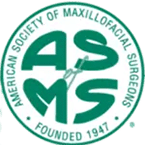- Because of drowsiness after surgery, someone must drive the patient home and stay with them overnight.
- The elastic bandage is removed by the following morning. The paper tape over the incisions is left in place until it falls off or is removed by the patient or Doctor in one week. The patient may shower the day after surgery.
- A brassiere should be worn during the day for two weeks to support the breast. No other dressing is needed. Although uncomfortable for the first 24-48 hours, discomfort is mild with several days. You can return to work after one or two days, if desired. Avoid heavy exertion or lifting for 3 weeks.
Risks
- Bleeding. Although uncommon, bleeding can occur after surgery. To best prevent this, avoid all Aspirin products and Ibuprofen (Motrin, Advil, etc.) and megavitamin and herbal supplements for two weeks before and after surgery and avoid exercise and excessive arm use after surgery for two weeks. Tylenol may be taken without risk. If a hematoma develops, it is necessary to remove the hematoma in the operating room. No physician’s fee is charged to remove a hematoma. The patient is, however, responsible for anesthesia, operating room costs and /or replacement of the implant.
- Infection. Infection is uncommon after any surgery, including a breast augmentation. If it does occur, however, the implant must usually be removed. It can usually be replaced after three or more months, although additional costs apply.
- Scarring. The most common incisions employed for a breast augmentation are just at the areolar border or in the fold underneath the breast. Sutures are placed so that no stitch marks are uncommon. There is some black-and-blue for one to two weeks around the incision. There may be some slight crusting along the incision for that time. All incisions become red, raised and lumpy at one month and then become soft, pale and flat over the next six to twelve months. Although all scars are visible, they are usually relatively hidden in the normal color and contour of the breast and most women find the improvement in breast shape and size worth the scar.
- Nipple Anesthesia. Although uncommon, temporary or permanent anesthesia (numbness) of one or both nipples, or other areas of the breast can follow a breast augmentation. Occasionally the nipple will be hypersensitive and have a pins-and-needles feeling for several weeks to months after surgery.
- Capsule Formation (an unnatural hardness or firmness of the breast). Breast implants do not change in the body and they remain soft. However, a thin layer of scar tissue forms around all implants. In some women, this sac of scar shrinks and squeezes the implant, like tightening a tube of toothpaste (the toothpaste is soft inside, but the aluminum tube feels firm as the outer envelope is tightened down). This occurs gradually over months. If excessive, the breast shape and consistency can be unnatural. Correction requires re-operation, excision of scar, and replacement of the same or different implants. Sometimes the breast will become hard again, despite re-operation. If a revision is required months or yeas after your surgery, you are responsible for additional operating room fees, the implant costs, anesthesia costs, and the surgeon’s fee.
- Implant Rupture. It is unusual for implants to break, even after significant automobile or other accidents. However, implant rupture does occur occasionally and may require re-operation to replace the implant and the associated inconvenience and expense. If they are filled with saline, the water is simply absorbed within the body and the breast goes “flat.” If this occurs, the collapsed implant is removed and replaced. If filled with silicone gel, the gel can be forced in to the adjacent breast tissue and can cause abnormally firm lumps. This is uncommon. Usually the silicone gel simply remains within the sac of scar that normally forms about the implant. Rupture of a silicone implant is often undetectable by physical or mammographic examination, requiring an MRI scan to confirm a rupture. Usually few or no symptoms or problems occur. Once identified, however, the ruptured implant is removed and replaced. The risk of rupture is about 1% per year.
AFTER SURGERY
- An ace bandage will be wrapped around your chest at the time of surgery. Leave it in place until the doctor removes it the day after surgery.
- After the ace bandage is removed, you may shower as desired. Steri-strips will be present over your incisions. They will fall off after a few days to a week, or may be removed after 7 days. After surgery, you may continue to wear the ace bandage for comfort, or any bra you desire, or go braless. Some women prefer to remove the wire from an underwire bra for comfort for a week or two.
- Most strong discomfort is gone in 24-48 hours, but you will be sore for several weeks.
- You can increase the inferior fullness of your breasts more quickly after surgery by applying an ace bandage over the top of your breasts. This applies pressure and stretches the skin below.
- Most patients will notice a gurgling sound and feel to the breasts for a few days to a few weeks after surgery. This is air, which enters the dissected pocket about the implant at the time of surgery. It is normal and resolves spontaneously. Some patients note a firm “line” under the skin in the fold under the breast for a few weeks. It is not serious or abnormal and will disappear.
- If you use a smooth implant, 2 days after your surgery you should start breast massage to stretch the pocket about the implant and decrease the risk of late tight scar (capsule formation), which can create a breast that feels too firm. This should be done 5-10 times a day. Simply push the flat of your hand on the inferior part of your breast, pushing the breast up until it bulges under your collarbone. Then release the pressure. Repeat this 5 times, 5 times a day. You do not need to get undressed. So that you don’t forget, you might do this every time you go to the bathroom. This massage should be continued for at least 6 month. Massage is not useful for textured implants.













